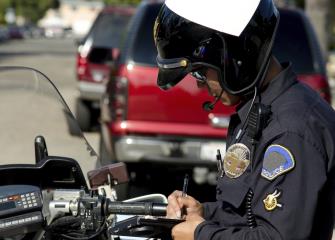An official website of the United States government
 United States Department of Labor
United States Department of Labor

This occupational group includes workers engaged in firefighting and fire prevention, law enforcement, and animal control, as well as private detectives and investigators, security guards, lifeguards, transportation security screeners, and crossing guards.
The qualifications that workers need to use judgment, make decisions, interact with others, and adapt to changes in jobs.
In 2024, more than basic people skills were required for 71.2 percent of protective service workers, and basic people skills were required for 28.8 percent.
| Requirement | Yes | No |
|---|---|---|
|
Adaptability: Work schedule variability |
58.7 | 41.3 |
|
Pace: Pause control |
11.8 | 88.2 |
|
Working around crowds |
32.9 | 67.1 |
|
Telework |
0.7 | 99.3 |
|
Work review: Supervising others |
13.5 | 86.5 |
|
Work review: Presence of supervisor |
21.5 | 78.5 |
|
Source: U.S. Bureau of Labor Statistics, Occupational Requirements Survey |
||
The minimum level of formal education required, credentials necessary, on-the-job training, and prior work experience necessary for average performance in jobs.
In 2024, credentials were required for 83.3 percent of protective service workers. Prior work experience was required for 27.3 percent and on-the-job training was required for 78.8 percent.
A high school diploma was required for 74.4 percent of protective service workers.
The various tangible or concrete hazards or difficulties that are in the vicinity of where jobs’ critical tasks are performed.
In 2024, 97.9 percent of protective service workers were not exposed to extreme cold, and 88.0 percent were not exposed to extreme heat. Wetness was not present for 75.7 percent, 97.7 percent were not exposed to heavy vibrations, and 10.2 percent were not exposed to the outdoors.
Refer to the physical activities required to perform tasks in jobs. The presence and, in some cases, duration of these activities are published.
In 2024, reaching at or below the shoulder was required for 70.6 percent of protective service workers and was not required for 29.4 percent. For 12.0 percent of workers, reaching at or below the shoulder was seldom performed, for 52.3 percent reaching at or below the shoulder occurred occasionally, 6.3 percent frequently, and for less than 0.5 percent reaching at or below the shoulder occurred constantly.
Performing work in low postures was required for 67.2 percent of protective service workers and was not required for 32.8 percent.
The choice to sit or stand when performing critical tasks was available to 4.0 percent of protective service workers. On average, workers spent 42.2 percent of the workday sitting and 57.8 percent of the workday standing.
| Requirement | Yes | No |
|---|---|---|
|
Choice of sitting or standing |
4.0 | 96.0 |
|
Driving |
67.7 | 32.3 |
|
Climbing structure-related ramps or stairs |
65.3 | 34.7 |
|
Source: U.S. Bureau of Labor Statistics, Occupational Requirements Survey |
||